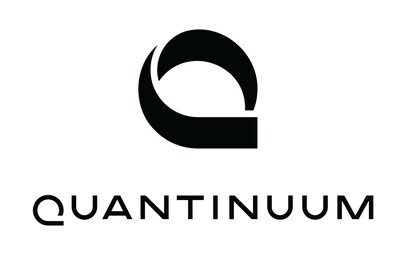CorrectSequence Therapeutics’ CS-121 Completes Administration of First Chylomicronemia Patient, Demonstrating Excellent Safety and Significant Efficacy
SHANGHAI, November 6, 2025 /PRNewswire/ — November 6, 2025, Shanghai, China, CorrectSequence Therapeutics Co., Ltd.Correct the rest), a clinical-stage biotechnology company pioneering transformer base editing (tBE) technology for the treatment of serious diseases, announced that the first patient in its investigator-initiated trial (IIT) of base editing therapy CS-121 targeting APOC3 For chylomicronemia / hypertriglyceridemia successfully completed treatment and was discharged from the hospital.
The patient, diagnosed with chylomicronemia, had a long history of fasting triglyceride (TG) levels above 12.5 mmol/L and recurrent acute pancreatitis. In increasing dose IIT for CS-121, his fasting TG level dropped significantly within three days of a single low-dose administration, without adverse effects.
It is the world’s first successful clinical treatment of hyperlipidemia with gene editing therapy targeting APOC3.
Picture: World’s first patient to benefit from gene editing therapy targeting APOC3 (Correctseq CS-121) for Hyperlipidemia (6th from right) successfully completed dosing and was released.
Chylomicronemia is a metabolic disorder characterized by abnormally elevated chylomicrons in the blood, associated with dysfunction of lipid metabolism, leading to extremely high fasting TG levels and life-threatening complications such as acute pancreatitis. It is the most serious subtype of severe hypertriglyceridemia (sHTG)including Familial chylomicronemia syndrome (FCS) And Multifactorial chylomicronemia syndrome (MCS). FCS is a rare autosomal recessive disorder caused by biallelic mutations in the lipoprotein lipase (LPL) gene or other key regulatory genes, with a fasting TG ≥ 10 mmol/L (885 mg/dL) and a worldwide prevalence of 1 in 100,000 to 1,000,000. MCS results from a complex interaction of genetic, lifestyle or metabolic disorders with a prevalence of up to 1 in 600 worldwide.
Current treatments for chylomicronemia mainly aim to control fasting TG levels below the risk threshold for acute pancreatitis (<5.7 mmol/L or 500 mg/dL), but available triglyceride-lowering medications are often insufficient and very low-fat diets are difficult to maintain in the long term.
Scientific studies have shown that the APOC3 protein, produced in the liver, plays a central role in the regulation of TG. Large-scale population analyzes showed that individuals carrying natural APOC3 loss-of-function mutations had significantly lower TG levels without adverse effects. With advances in gene editing technologies, it is now possible to therapeutically modulate APOC3 expression at the genetic level to lower TG levels, providing a potential curative strategy for chylomicronemia and hypertriglyceridemia.
CS-121, Correctseq First of all alive gene editing therapy for chylomicronemia and hypertriglyceridemia, is based on the Transformer Basic Editor (tBE) — a highly accurate base editing system independently developed by the scientific co-founders of Correctseq. Administered by intravenous injection, tBE is delivered via lipid nanoparticles (LNPs) to the liver and precisely modifies the target APOC3 embarrassed. It imitates natural benefits APOC3 loss-of-function variants to downregulate APOC3 expression and effectively lower plasma TG levels. By addressing the disease at the genetic level, this therapy aims to achieve “single treatment, lifetime effectiveness“.
CS-121 using next-generation tBE technology, which enables precise single-base correction without DNA double-strand breaks, providing superior safety compared to CRISPR-based gene editing therapies. tBE avoids potential safety risks such as p53 activation, chromosomal damage, off-target effects, and liver toxicity caused by DNA double-strand breaks. Preclinical animal studies have shown excellent long-term safety and efficacy, with no off-target changes detected in various organs, including liver, lung, muscle, spleen, ovaries, heart and kidney.
The first patient, a 63-year-old man, received a single low-dose intravenous administration on October 18, 2025. His fasting TG levels dropped significantly within three days of treatment, and he was discharged three days after treatment without any treatment-related adverse events to date.
The principal investigators of CS-121 IIT are Professor Huan Zhou And Doctor Zhili Wu of the First Affiliated Hospital of Anhui Medical University.
Correctseq, an innovative clinical-stage IND biotechnology company previously developed CS-101A ex vivo successful gene editing therapy treated dozens of patients affected β-thalassemia and sickle cell disease disease. The company is moving forward in the first alive gene editing therapy CS-121 for clinical trials and IND commercialization, with the aim of offering “A-time processing, lifetime effectiveness” treatment of patients with chylomicronemia, hypertriglyceridemia and other metabolic disorders.
Thanks: The first hospital affiliated with Anhui Medical University, ShanghaiTech University and Shanghai Research and Clinical Trial Center.
About CorrectSequence Therapeutics
Therapeutic CorrectSequence (Correct the rest), incubated at ShanghaiTech University, is dedicated to harnessing innovative gene editing technologies to transform the lives of people with serious diseases. The company has developed several cutting-edge core editing systems that provide exceptional accuracy, minimize off-target effects, and improve alive efficiency of editing. Its strong pipeline spans genetic disorders, metabolic diseases and cardiovascular conditions, with several programs in clinical development.
For more information, visit www.correctsequence.com.
Media Contact:
Company cooperate: BD@correctsequence.com
Recruitment for clinical trials: CT@correctsequence.com
![]() View original content to download multimedia:https://www.prnewswire.com/apac/news-releases/the-worlds-first-gene-editing-therapy-targeting-apoc3-for-hyperlipidemia-302606377.html
View original content to download multimedia:https://www.prnewswire.com/apac/news-releases/the-worlds-first-gene-editing-therapy-targeting-apoc3-for-hyperlipidemia-302606377.html
SOURCE CorrectSequence Therapeutics




